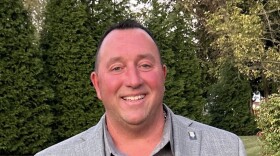Bill Burton: It's time for us to take a look at the Science Behind the Forecast as I am joined by WAVE 3 meteorologist Tawana Andrew. Good morning, Tawana.
Tawana Andrew: Good morning. Today we're talking about something that's important to anyone with a green thumb.
BB: Yeah, here we are in spring. And it's time to think about what kind of plants you're going to put in the ground this year. And you have to take into account some changes in what's known as the hardiness zone. So what tell us about the zones.
TA: So this is really something that was put out by the US Department of Agriculture, and they updated their Plant Hardiness Zone map in November of 2023. But you know, most of us weren't thinking about that during the winter months. But now that we're getting into spring, now we're like, Oh, what am I going to plant, right? And the updated map shows that most plant hardiness zones across the entire country are shifting northward, as temperatures warm. So these zones are based on the coldest average annual temperature at a particular location. And it's very interesting that the 2023 map is pulling in data from more than 13,000 weather stations. For the 2012 map, they use less than 8000 stations the big difference right there. And all of that data that they compiled shows that the coldest winter days on average, are now five degrees warmer across the entire country. That is why we're seeing those shifts in the plant hardiness zones, and potentially the changes and what kind of plants that we can even put in the ground here in our area. So for anyone who didn't know, each zone represents about a 10 degree Fahrenheit range, and the coldest zone is ranked one and the warmest is ranked 13th. So we of course, are smack in the middle of it all, most of our area's, either a six or a seven. And each zone is divided into half of that. So you have the five degree half zones. And A is for the northern sections. And B is for the southern section. So if you ever wondered if you're looking at Lowe's or Home Depot or any of the amazing local plant stores we have in our area and you wonder why you see the A and B, that is why. So Louisville has actually seen a change from a six B hardiness zone to six A and that comes with a five degree increase in our coldest winter temperatures. Etown saw the same change with a four degree increase in the coldest winter temperatures. In Floyds Knobs and Scottsburg, so I was just diving into all the cities in our area, there was a hardiness zone change of six A to six B, those spots also saw a four degree increase in the coldest winter temperatures. So for anyone's thinking, hey, winter is not as cold as it used to be, you're right, you're right. Yeah, we're getting milder winters across our area. And just a reminder, this is mainly for perennials, not annuals, since annuals are going to die out once we get into the winter months anyway. But it's just so important to make sure you're choosing the right plant for your region. And if you can choose a native plant that is even better.






